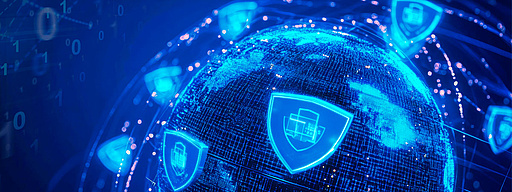
Best practices to get SAM under control
Managing today's software environments is a challenge, especially when it comes to license management. Full transparency and clear processes enable IT admins to maximize the value of all software assets in their environment efficiently.
Short & Sweet
- Efficient software asset management (SAM) saves costs, frees time for higher-priority work and increases employee productivity.
- Automated SAM solutions provide full transparency with comprehensive tools for maintaining accurate inventories and tracking license status.
- Clear SAM processes provide IT teams with data needed for cost-effective software management and procurement.
Software asset management solutions are indispensable for reliable management of operating systems and applications. By replacing time-consuming manual processes with automated SAM solutions, IT teams can achieve three important benefits:
- Reduced costs: Removing unused software licenses can produce considerable savings in IT budgets.
- Increased productivity: An efficient license management system can significantly improve productivity in IT, purchasing and related
departments.
- Audit preparedness: While some companies may believe that they can quickly prepare for a software audit by adopting a SAM solution, that approach simply doesn't work. License management is an ongoing process that takes time to implement but ultimately saves time and improves compliance.
The benefits of SAM automation solutions
Software assets are essential for company operations but managing them can be quite complex. Different teams and departments often have their own preferences and requirements for specific
applications and functions. Keeping an accurate overview of all software throughout its lifecycle is a major challenge for IT admins without full transparency and immediate knowledge of all
licenses, versions and installations.
Complexity and IT workloads increase when admins have to install, update or remove software manually at scale without disrupting users. However, SAM automation tools make it possible to
accomplishing those tasks reliably, efficiently and accurately.
The baramundi Management Suite (bMS) provides exactly the right combination of capabilities. It can quickly and automatically generate a detailed inventory of all network endpoints including all installed software complete
with version and build numbers. It also offers efficient application usage tracking and
optimized license management. The bMS not only can provide comprehensive at-a-glance transparency for IT assets, it also enables seamless transfer of detailed inventory and license data
to internal company reporting tools.
Four best practices to optimize SAM
A proven structured approach includes four best practices for efficient SAM processes:
1. Document and standardize procurement processes
Every good SAM process starts with defining standardized practices for procurement and storage of licenses and license certificates. Admins should document these practices and make them mandatory for the entire company.
2. Clean up and organize license inventories
The key to being able to find all licensing documents and information easily at any time is keeping everything in one place. As a rule, that place is a central inventory containing all license agreements and software maintenance contracts. Automated tools such as those in the bMS generate those inventories automatically.
3. Inventory software and associated licenses
Automatic recording of software assets ensures that nothing is overlooked. Admins can always have an immediately available overview of whether all installed software is covered by existing licenses. With that information in hand, IT admins also can determine if the actual usage of software matches the licenses purchased, i.e., if unused or under-used packages could be removed to free up licenses, or, if additional licenses are needed. It can also help detect unauthorized user-installed software that could either be licensed if needed or uninstalled.
4. Track usage behavior and manage updates appropriately
Admins also can continuously track software usage habits while protecting user privacy. Automated tools in the bMS and other solutions can show real-time data on software usage. That makes it possible to determine update periods and contract milestones reliably and guide decisions on new purchases or license changes in line with actual usage. Usage tracking also can indicate if users are adopting requested or newly deployed software as expected.
Licensing clarity has many advantages
The combination of proven best practices and automation gives IT teams the tools and data needed to monitor and manage software assets efficiently and in line with requirements at all times. IT admins can quickly identify over- or under-licensed software, whether maintenance contracts for disused systems can be terminated, when contract renewals are due, or if better terms can be negotiated. Last but not least, an automated and comprehensive SAM solution will make sure that your company will be prepared if and when it faces a software audit.
Keeping IT assets under control
Improve your asset management practices using our 5-step checklist. Our free guide can help you manage your IT assets more efficiently throughout their lifecycle.


